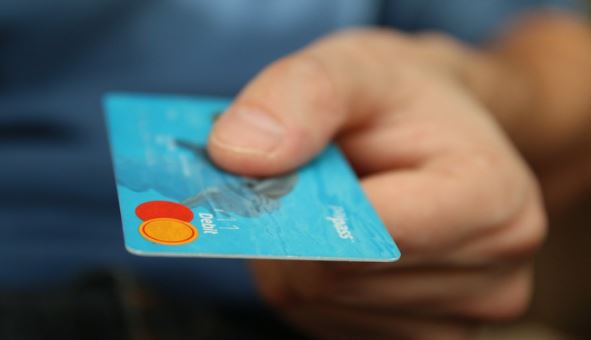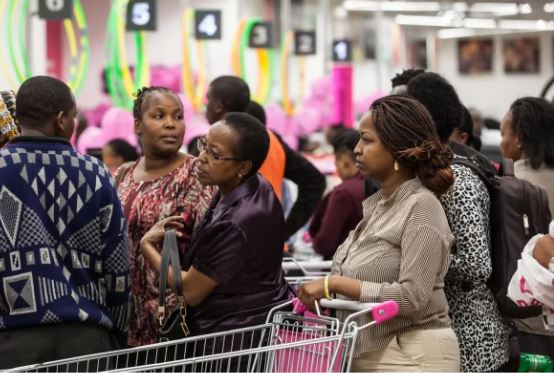Lifestyle
It’s official! This is what most South Africans bought on Black Friday

This year’s Black Friday weekend was, as always, a buzz of excitement as South Africans scoured malls and online sites for the best deals available.
And while there were some extravagant purchases that ran into millions, data reveals some interesting trends about how people were paying for things and what they were buying.
Analysis has been completed, money has been tallied, and this fact can now be made official: The most popular purchase for South Africans in 2023 was…groceries!
Purchasing data from Capitec reveals that consumers prioritised food and groceries over electronics and luxuries, a visible indication that many South Africans are feeling the financial squeeze and, thus, used Black Friday to stock up on necessities.
Francois Viviers, group executive of marketing and communications, says bagging well-priced essentials was the order of the day as the Bank’s customers made more conscious choices.
“Retail giants such as Shoprite and Checkers, Pick n Pay, and Spar dominated consumer spending over Black Friday weekend, with clients collectively making over 4.1 million transactions and spending over R1.7 billion.”
Approximately half of this figure was spent at Shoprite and Checkers.
“Despite rising living costs and interest rate hikes, Capitec clients maintained similar spending patterns to the previous year, with data suggesting that they chose grocery deals at retailers to counter food inflation this year.”
Amid these broader trends, however, a more nuanced pattern of consumer behaviour emerged, with one notable example being the amount spent at fast-food outlets. KFC led the pack with more than 390,000 transactions made at the fried chicken franchise over the weekend, he says.
On Black Friday itself, Reuters reported that Johannesburg’s Mall of Africa was buzzing with bargain hunters pushing trolleys laden with groceries such as cooking oil, boxes of milk, and multi-packs of diapers. Household items such as pillows and detergents were also popular buys. Shoppers told the news agency that was no money for electronics this year, and that they were “basically just working for food now”.
Many consumers also said they were using the specials to stock up on food and groceries ahead of the school holidays.
Mirroring this, shopping trends on takealot.com’s annual Blue Dot Sale showed a bias towards household essentials, specifically grocery items. The retailer’s bulk shopping proposition recorded growth of 65 percent compared to last year.
Top grocery products by units included:
- Coca-Cola 24 x 300ml cans
- Baby Soft 2ply x 18 toilet rolls
- Klipdrift Premium Brandy
- Finish 100s Dishwashing tablets
- Castle Lite Lager x 24 bottles
- Nivea Men’s deodorant/ roll on
While consumers have been financially burdened by inflation and high interest rates over the past year, FNB says groceries was one of the most popular spend categories. Travel and digital technology purchases were also top of the list.
Online shopping, digital payments gaining momentum
Black Friday shopping habits also highlight a continued shift from cash to digital payments, with Viviers saying that digital transactions are surpassing cash transactions by a significant margin.
“Capitec card usage surged during this period with more than 87 million transactions recorded over the weekend. Moreover, there were nearly 300 million interactions on the Capitec app, marking a substantial increase from 2022 Black Friday’s 188 million app interactions.
“These statistics indicate a steady transition towards digital and card-based payments, reflecting evolving consumer buying trends in the country.”
While data from BankservAfrica shows that the South African banking industry experienced a six percent decline in card transaction volumes, Nedbank executive Privesan Naidoo says the Bank has witnessed a continuation of the shift towards e-commerce. This is evident by a “robust” 35 percent growth in online payment transactions.
“The digital transformation of South Africa’s retail landscape over the past two years is undeniable, and it continues to drive consumer preferences towards online shopping.”
In addition, there is an encouraging trend towards contactless payments as consumers now recognise the convenience and security that these contactless transactions offer.
Ashley Saffy, head of spend and customer value management at FNB Card, says consumers have increasingly shown a strong preference for safer and more convenient payments, with virtual cards, online spending, and use of digital wallets increasing significantly since last year.
“Over Black Friday weekend, 54 percent of all in-store transactions were contactless, which increased by 10 percent year-on-year. Online spend also performed well this weekend, with 24 percent of all spend online.”
For credit card spending specifically, 45 percent of the Bank’s customer spend was online, an increase of seven percent from the previous year.
Capitec clients, however, seem to have a stronger preference for in-store shopping with less than 10 percent of the total spend value being online. Still, the Bank is witnessing a significant shift towards digital shopping, with the volume of transactions on its banking app increasing by over 40 percent compared to last Black Friday. There was also increased activity on platforms like Checkers Sixty60 and Takealot, which accounted for more than 10 percent of total Black Friday spending.










